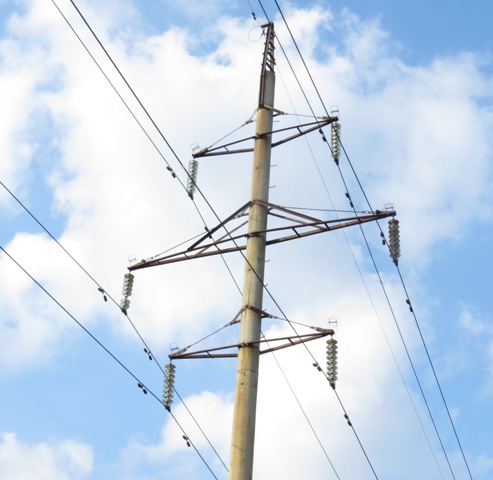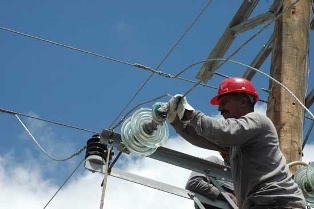Repair of overhead power lines
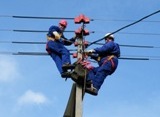
Operation of overhead power lines includes Support (operational maintenance), overhaul and work related to the removal of emergency damage on overhead lines.
Labor costs for these types of work are distributed as follows: emergency restoration works — 0.3 — 1.2% (of all labor costs), maintenance — 9.5 — 12.6%, major repairs 86.4 — 89.5%.
Maintenance and overhaul are the main conditions for the normal, trouble-free operation of overhead power lines. These works are planned and constitute approximately 99% of all service and operating personnel labor costs. In the structure of labor costs for the repair section, the main share falls on clearing the routes and replacing defective insulators.
The share of labor costs for clearing the routes is about 45% of the total volume of overhaul work. In terms of volume, labor costs for these jobs are growing faster than the length of service lines is increasing.This is due to the fact that the routes of newly introduced and commissioned air lines (about 30%) pass through forested areas.
Time of current and major overhaul of overhead lines
Overhead power lines are repaired annually. The scope of work carried out includes: repair and straightening of supports, replacement of damaged insulators, hauling of individual sections of the network, inspection of pipe restraints, felling of overgrown trees. During the overhaul, a planned replacement of supports, pulling and straightening of lines, replacement of defective fittings is carried out. Overhaul of low-voltage overhead lines is carried out once every 10 years.
To eliminate defects found during inspections, a schedule for stopping overhead power lines for repair is drawn up.
Repair of wooden poles
During the operation of overhead power lines, deviations of the supports from the vertical position are observed. Over time, the slope increases and the support may fall. A winch is used to restore the support to its normal position. After straightening, the soil around the support is well compacted. If the support bends as a result of loosening the bandage, tighten it.
The wooden parts of the step (supports) located in the ground are subject to relatively rapid decay. In order to extend the service life, antiseptic bandages are installed at the places of damage. Before applying a bandage, a part of the wood is cleaned of rot, then an antiseptic paste is applied with a brush with a layer of 3 — 5 mm, and a strip of synthetic film or roofing material is applied, which is fixed with nails, and the upper edge is tied with a wire with a diameter of 1 — 2 mm.
Another technology of work provides for the preparation of waterproofing sheets with a pre-applied antiseptic and their subsequent installation in the affected area.
Nowadays, it is often practiced to replace damaged wooden steps with reinforced concrete ones. If the stepson is replaced with the remaining support in good condition, then such work is carried out without stress relief. The new stepson is installed on the opposite side (relative to the old stepson), and the old one is removed.
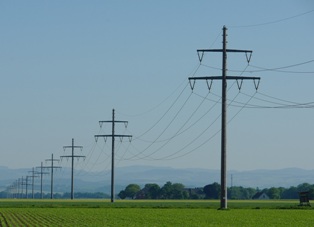
Repair of reinforced concrete supports
The erection of single-column reinforced concrete supports is carried out using a telescopic tower.
The following defects of reinforced concrete supports are distinguished: transverse cracks, voids, cracks, stains on concrete.
In the presence of transverse cracks, depending on the type of support, the concrete surface in the area of the cracks is painted, they are sealed with polymer-cement putty, bandages are installed and the supports are replaced. Before painting, the surface is washed with a solvent, then primed with a layer of HSL varnish and covered with a mixture of varnish and cement (in a ratio of 1: 1 by weight).
After drying, apply a layer of perchlorovinyl enamel XB-1100. To prepare a polymer-cement solution, cement is initially mixed with sand (cement grade 400 or 500 with sand in a 1:2 ratio), then 5% polymer emulsion is added. The resulting mass is mixed and smeared on the damaged area. After 1 hour, the patch is moistened with an aqueous emulsion solution.
If the width of the crack is more than 0.6 mm, the presence of voids or holes with an area of up to 25 cm2, a bandage is applied.The damaged area is cleaned, a vertical or horizontal steel frame is placed (steel with a diameter of up to 16 mm), a formwork is made and poured with concrete. The edges of the strip should overlap the concrete breaking zone by 20 cm.
In the presence of longitudinal cracks longer than 3 m on the entire surface of concrete, cavities or holes with an area of more than 25 cm2, the maintenance is replaced.
Cleaning and replacement of insulators when repairing overhead power lines
Cleaning of insulators can be done on a broken overhead power line by manual scrubbing or on a live line by washing the insulators with a stream of water. For washing the insulators, a telescopic tower is used, in which an auxiliary stand for the barrel with a nozzle, through which water is supplied under pressure, is installed. The water is fed into a cistern. The work is performed by specially trained persons.
Replacement of defective insulators is carried out without lowering or lowering the wire. On an overhead line, where the mass of the wire is small, a telescopic tower is used and the wire is not lowered.
After disassembling the knitting with a special key, the old insulator is removed from the pin, the polyethylene cap is replaced. Before putting on a new cap, it is preheated in hot water at a temperature of 85 — 90 ° C. Then, with blows of a wooden hammer, it is pushed onto the hook, an insulator is placed and the wires are fixed.
Adjustment of wire sag
This operation is performed by inserting or cutting a piece of wire. Before starting work, the length of the insert (cut) is determined by calculation. The tension is then turned off, the wire is disconnected from one of the anchor supports and lowered to the ground, cut, inserted and stretched again.If the length of the insert (cut) is small (0.2 — 0.6 m), the sag arrows are adjusted by changing the attachment of the wires to the anchor supports.
In networks 0.38 — 10 kV, such work is usually carried out in the summer, and the sag is installed "by eye". This is undesirable. This setting may cause the wire to break in the winter.
Repair of wires
With relatively small damage to the wires (3 — 5 wires out of 19), the broken wires are twisted and applied with a bandage or a repair sleeve. In this case, the wire section is not cut.
The repair sleeve is a longitudinally cut oval connector. During installation, the edges of the cut are grown, the sleeve is placed on the damaged area and pressed using presses MGP-12, MI-2. The length of the sleeve depends on the size of the damaged area.
In case of a large number of broken wires, the defective sections of the wire are replaced. The section of the new wire must have the same laying direction as the one being repaired. The length of the insert is taken from 5 to 10 m, depending on the cross section of the wire. During the repair, a telescopic tower is used, the wire is lowered to the ground.
The most common ways to connect inserts to the main wire is by using oval connectors and then crimping or twisting them.
Thermite cartridge welding is also used to repair overhead power line wires. Only persons trained and capable of performing this operation independently may work on welding.
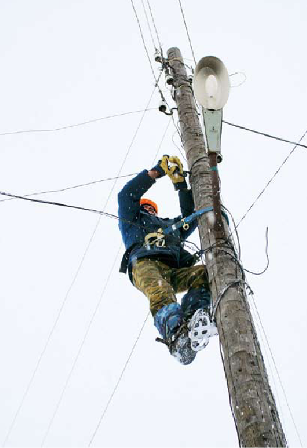
Clearing the overhead line route
The cleaning of the route is carried out in order to avoid accidents due to falling trees on wires, overlapping lines with branches of growing trees, to protect against fires. In addition, work is being done on the highway to protect agricultural land from weeds.
Measures are planned to clean up the airline route. Manual, mechanical and chemical types of cleaning are used. Manual cleaning is mainly carried out along the 0.38 — 10 kV overhead lines.
The work is carried out by a specially trained team. Persons under the age of 18 are not allowed to cut and fell trees. A mobile trailer is usually taken to the job site with a large volume of work.
